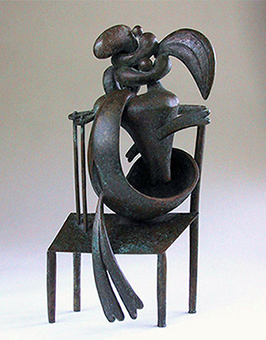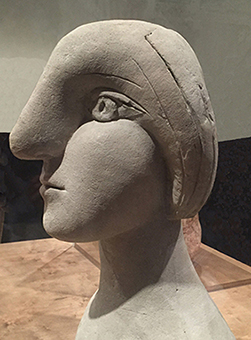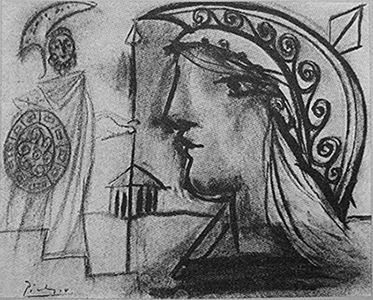The Seated Woman
On the 28 February, approximately halfway through producing the Une Anatomie series, Picasso also created a drawing that while retaining some of the skeletal features, also expressed a healthy exuberance for life. It was titled Seated Woman and I became equally fascinated by its articulate sculptural quality and transcribed it into three-dimensions (Figs. 33-34). Despite its date and stylistic similarities with the anatomy drawings it was not reproduced in Minotaure, and yet, it may well be another clue to fully understanding the raison d'être behind the series. One has only to compare it with the 1932 Boisgeloup plaster portraits of Marie-Thérèse to see that the seated figure is a portaite of her (Fig. 35). The joie de vivre expressed by the seated woman conceals a mixture of wishful thinking and actual observation on Picasso’s part. In Seated Woman Marie-Thérèse appears healed and fulsome to the point of appearing to literally give birth, which is suggested by the liquid-like form that gushes forth from a vagina-like shape. Typical of Picasso’s love of polysemy the flowing shape could equally depict legs. Was this Picasso’s way of encouraging her return to health? Unlike the pin or button-headed figures in the Une Anatomie series, which Gasman argues Picasso often used as a disparaging motif, this seated figure is clearly characterised by Marie-Thérèse’s facial features and additionally by her distinctive crescent shaped hair, which Picasso associated with the “crescent moon” and Minerva’s crescent helmet. In his 1934 charcoal drawing Minerva, Picasso lovingly pays homage to his muse by associating her with Minerva the goddess of wisdom, creativity and the arts and even uses the water motif on her helmet’s crescent finial to remind us of his muse’s love of water (Fig. 36). 34
34 35
35 36
36